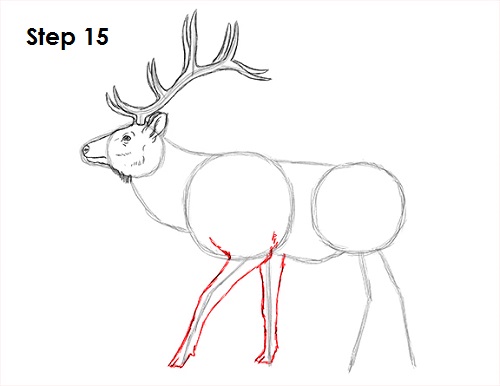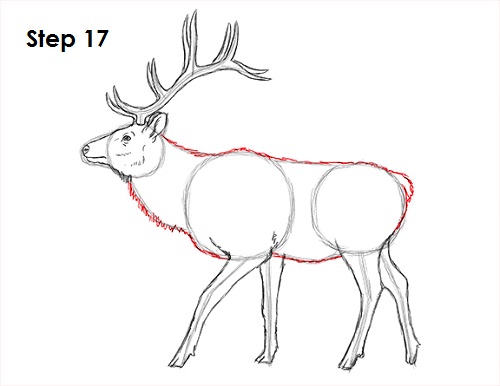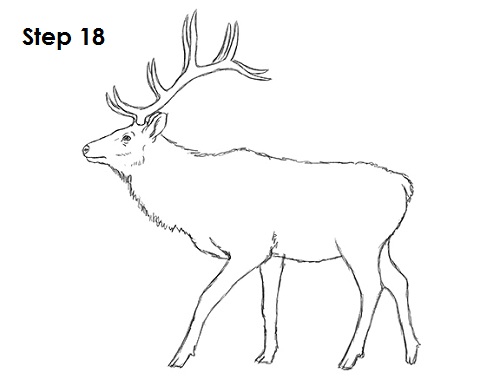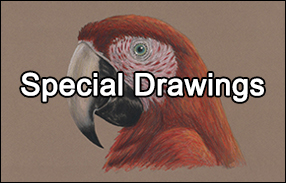Page 4 of 4

Step 15: Using the initial lines as guides, draw the long, thick front legs. The top of the leg should be thicker. Draw a line at the bottom to split the cloven hoof. Draw lightly at first to get the shape right. When you're happy with what you have, go ahead and darken it. Draw the leg on the other side the same way as the first. Draw lightly at first. Make the top thicker and split the cloven hoof.

Step 16: Use the initial lines as guides to draw the elk's hind legs. Draw the hind legs the same way you drew the front. The top part is a bit thicker and have the top joint come out more to create the hock. Now draw the leg on the other side using the same technique.

Step 17: Use the initial lines as guides to draw the elk's body. Use quick, short strokes on the bottom to represent the shaggy coat underneath and along the elk's neck.

Step 18 (optional): For a cleaner look, erase as much as you can of the initial guide lines. Don't worry about erasing all of them. It's okay to leave some behind. Also re-draw any final sketch lines that you may have accidentally erased.

Final Step (optional): Add some shading to your drawing to give it more dimension and volume. Pick the direction of the light source when shading so that the shadows are consistent with it. Vary the pressure on your pencil to get different degrees of tonal value. Add a cast shadow underneath. This helps ground the elk so it doesn't appear to be floating.
You can add more value throughout your drawing for extra detail. The neck and legs are usually darker than the rest of the elk's coat. It's a good idea to use reference to be as accurate as possible. Remember to PAUSE the video any time you need help along the way.
Thanks for watching! Subscribe to the
How2DrawAnimals YouTube Channel for a new tutorial every Tuesday.
To learn how to draw popular cartoon characters, visit
EasyDrawingTutorials.com.












